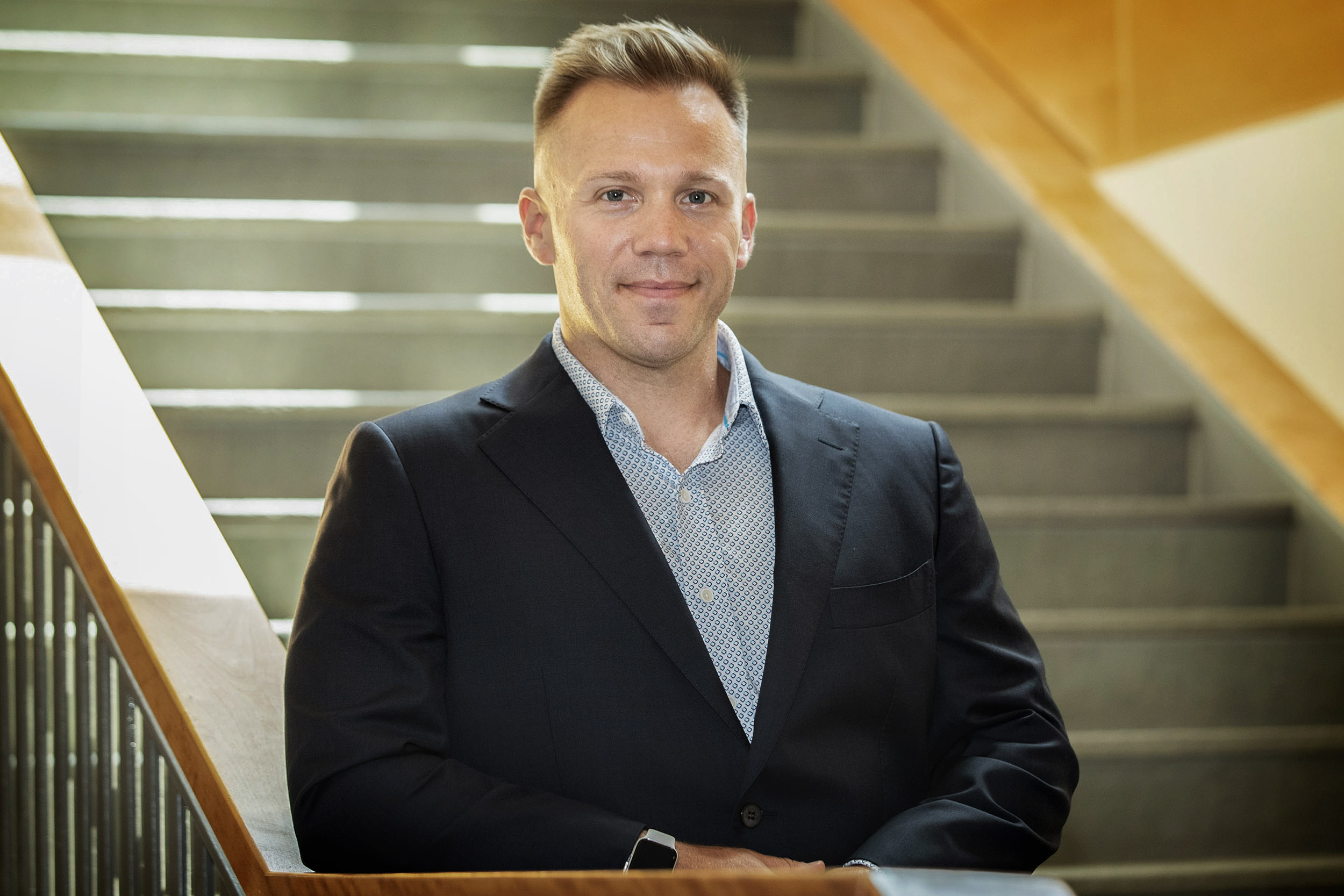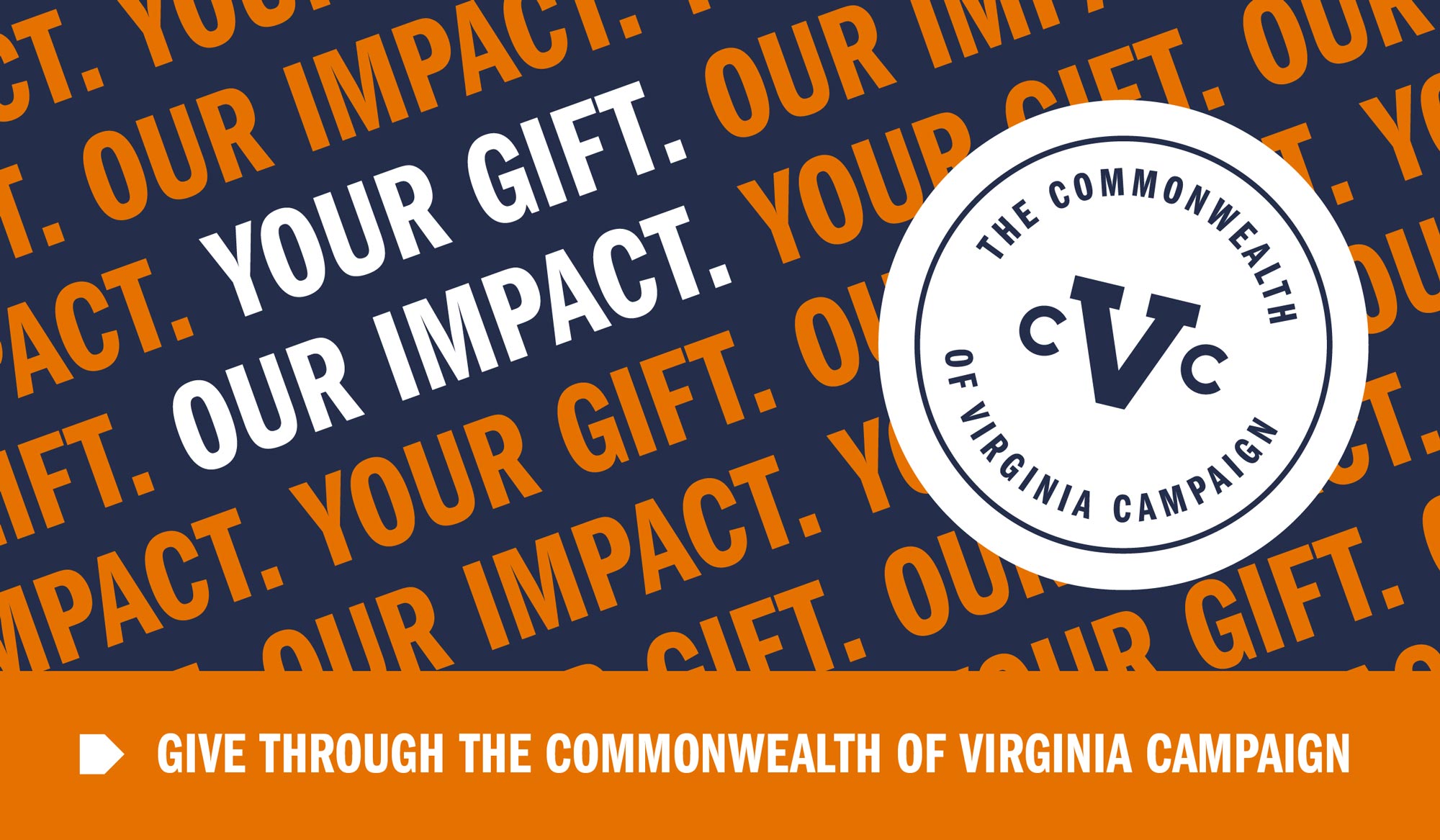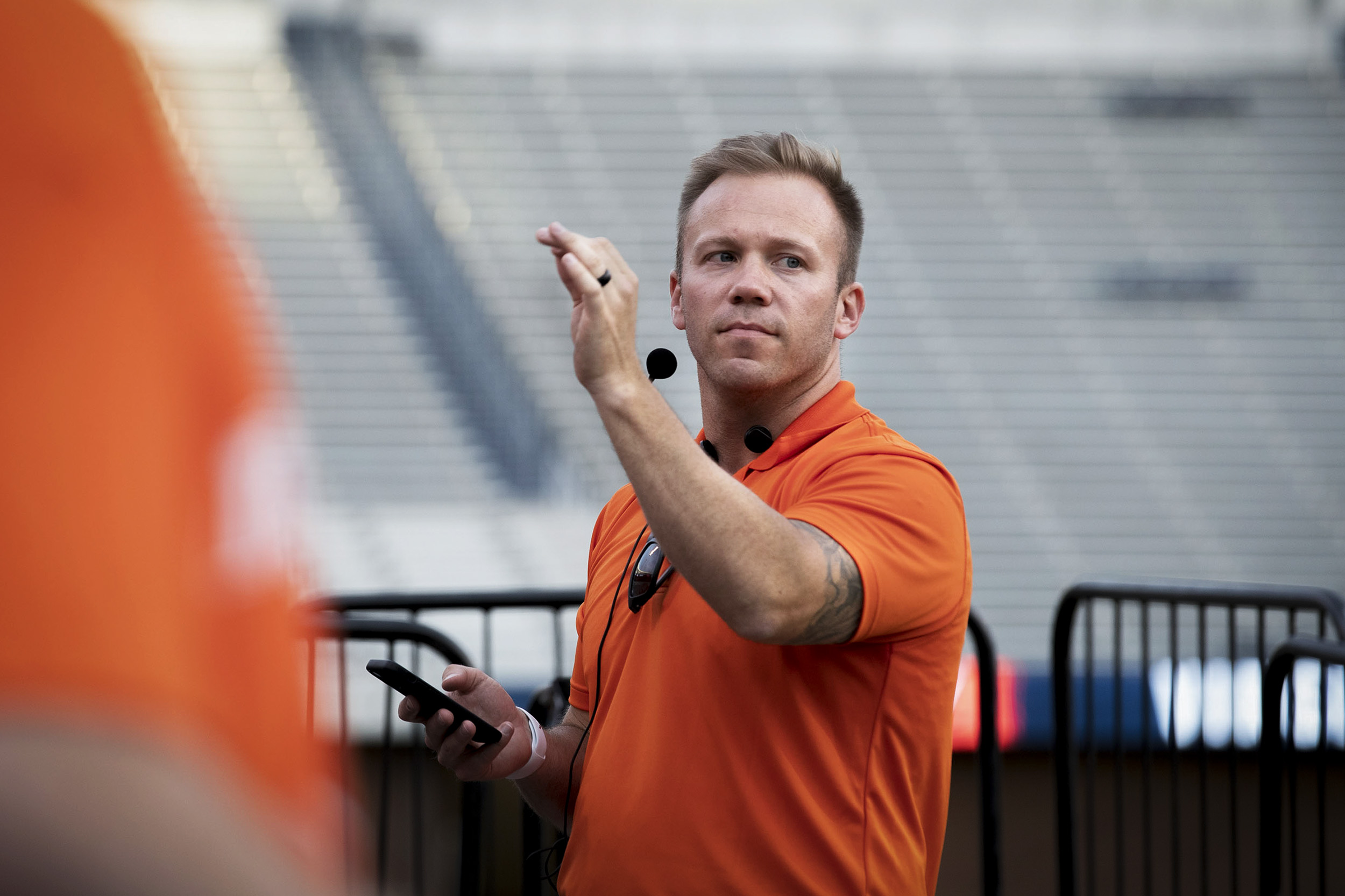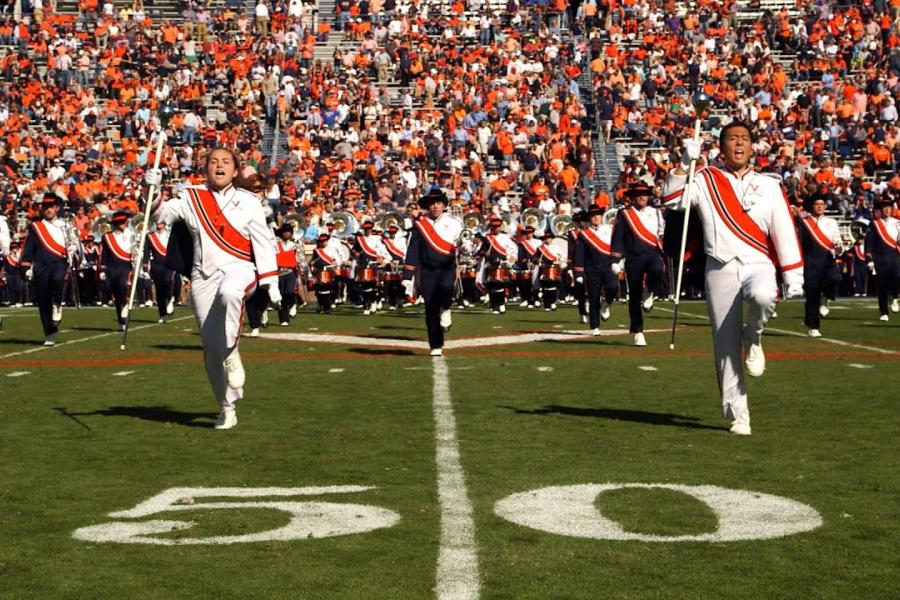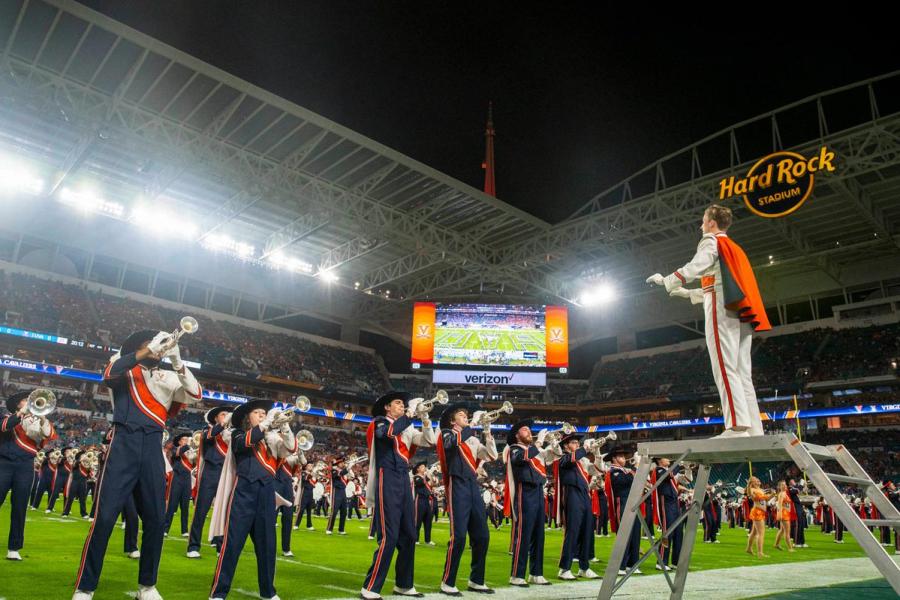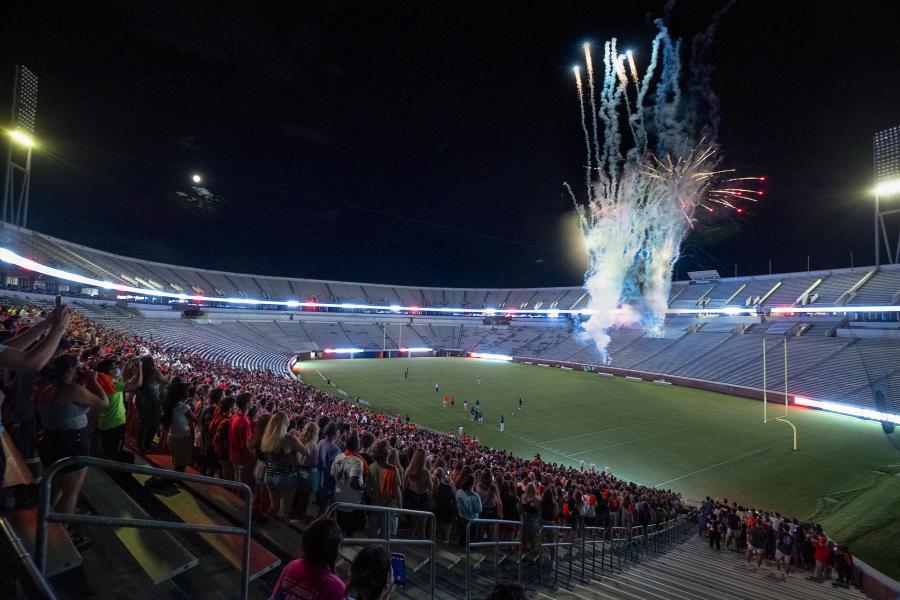Following a 2020 college football season where the COVID-19 pandemic kept the stands of Scott Stadium mostly empty during home games, the 275 student members of the University of Virginia’s Cavalier Marching Band were eager to hit the field again this fall.
Under the direction of UVA’s new director of bands, Elliott Tackitt, they sweated through rounds of rehearsals and meticulous walk-throughs of music and drill performances during August’s band camp. They hit their marks and delivered halftime performances at UVA’s first four home games of the season.
Then, on the eve of the fifth home game, against Georgia Tech on Oct. 23, the University loosened its pandemic restrictions on artistic performances, giving the band the green light to resume playing in the stands of Scott Stadium as well. It was welcome news for a band eager for the expanded opportunity to offer musical accompaniment to games, surrounded by classmates and fans.
With two home games left, including Saturday night’s nationally televised game against No. 7 Notre Dame, Tackitt said the Cavalier Marching Band is eager to build on the last three months of work to perform at its musical and creative peaks.
Tackitt traces his own love of marching bands to his experience performing with his high school’s national award-winning ensemble. As a college student at the University of Michigan, his weekends were spent working with area high schools as a band consultant. He pursued bachelor’s degrees of music in trombone performance and instrumental music education, and in the 15 years that followed, he established himself as a versatile educator, conductor and performer.
For seven years, he served on the faculty at Northern Arizona University, where he conducted concert bands, taught music education and performance majors, and directed all aspects of the NAU athletic band program. Tackitt completed his Doctor of Musical Arts in wind conducting at the University of Michigan in 2019 and has served on the faculties of the University of Michigan and Arizona State University.
He joined the academic general faculty of UVA’s College and Graduate School of Arts & Sciences this summer as an assistant professor of music and director of bands. In addition to serving as director of the Cavalier Marching Band, Tackitt also conducts the McIntire Department of Music’s Wind Ensemble and provides artistic guidance to the entire band program.
Tackitt recently talked with UVA Today about his creative goals for the Cavalier Marching Band, his sources of musical inspiration to broaden the range of composers, songs and performance themes it can explore, and his surprising musical performance history.
Q. What was the general reaction from band members when UVA announced on Oct. 22 [the day before the home game against Georgia Tech] that the University’s COVID protocols had been adjusted to allow the entire band, including the wind instruments, to perform in the stands?
A. The students were excited! They join band to perform, and my email filled up with variations of “Do we get to play this weekend in the stands?!” We were really happy for them, the fans and the football team.
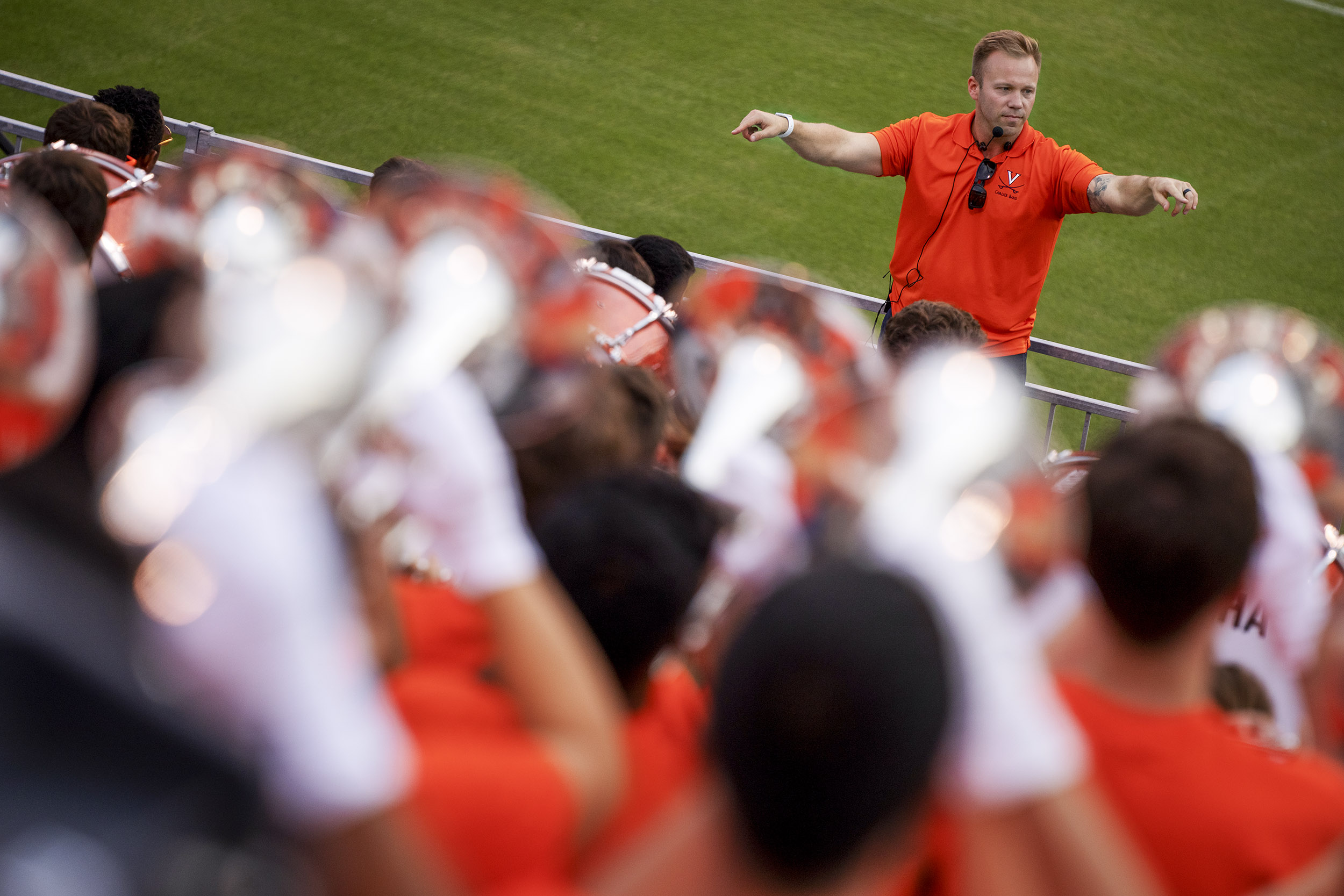
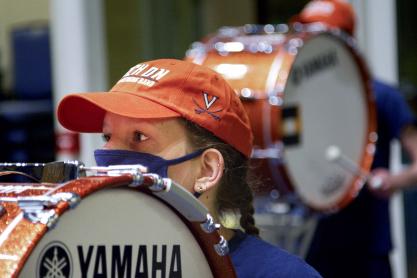

.jpg)
